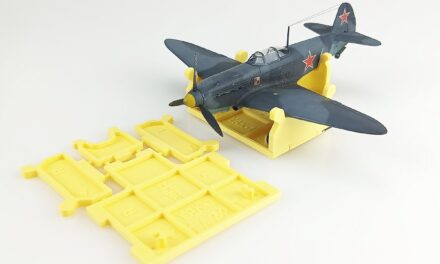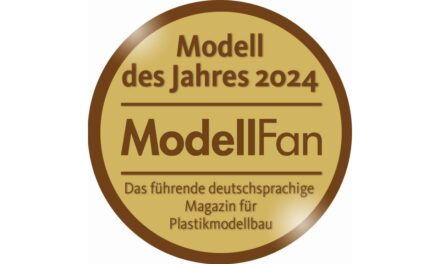One of the most known “elevens” of the September 1939 is PZL P.11c airplane serialed “8.138” with “white 3” side marking. Its two-tone splinter camouflage is similar with the Luftwaffe schemes. Despite its popularity this extraordinary airplane is quite mysterious and very little is known about its history.
Drafted into the Luftwaffe?
We know the “camouflaged 3” mostly from quite numerous photos of its wreck, taken by the Germans during the 1939 Autumn. Some of these photos were widely known already many decades ago. Poor quality of the reproductions in the books or magazines allowed to recognize only some of the two-tone German-like camouflage details and white number “3” on the fuselage side. Lack of the recognisable serial or a unit marking made the precise recognition of this airframe impossible. There was even hypothesis, that the plane has been used by the Germans for tests or a film and so repainted by them in Luftwaffe camouflage.
“Camouflaged 3” somewhere on the Mazovian field, photographed by the Germans. While the photo is sharp and has good resolution, many details of the marking and painting are obscured. Photo from Dr Tomasz Kopański collection.
Some decades later many better photos became known (mostly found and bought by Polish researchers on German auction-website). The researchers have been finding some additional information in the archive documents and pilot’s and ground crews accounts, which can directly or indirectly be connected with the “camouflaged 3” history. The most important were data from located in Warsaw Instytut Techniki Lotnictwa (Aviation Technology Institute) about testing the new camouflage schemes for PZL P.11c just before the war.
From aviation schools and research facilities to the front
During 1939 September fights at least three PZL P.11 airplanes have been delivered to the III/1 Fighter Wing as a war losses replacement. First of these machines, coming on 3rd September from Warsaw-Okęcie airbase, was most probably “8.46” from the Warsaw 1. Aviation Regiment stocks, with pre-war “67 N” underwing code in white. This plane has been crashed by Cadet Maciej Drecki after the fight against the Stukas on the following day. Two other “elevens” came on 5th September. One was flown by 2nd Lt Aleksander Wróblewski from Poznań III/3 Wing, who after fight against Heinkels had lost his own plane and, with many adventures, has come to Warsaw where he got “an airplane. Original PZL P.11c from Air Cadet Oficer’s School’s Technical Group, which served there for practical assembly and disassembly training. It is finally assembled and ready to be test-flown” – told Wróblewski in the interview with another pilot, Mirosław Ferić, responsible for the Squadron chronicle (Memoirs of the Tadeusz Kościuszko Squadron Pilot, quoted here after excellent publication of Łukasz Łydżba and Marek Rogusz III/1 Dywizjon Myśliwski. Vesper Edition, 2015).
– I took-off – recounts Wróblewski. – The machine goes up immediately, I’m trying to use the trimer – it doesn’t work, some poorly fixed pieces of metal flutters on the wing, oil obscures the windscreen. The airplane is “puking”, rudely speaking, but hangs firmly in the air. I’m landing, my guts are shaking as the tail shock absorber is dead-stiff. On the ground it turns out that the trimer cables have been crossed. The machine guns are factory-fresh, just installed in the airframe, without synchronization, without testing and without gunsight adjustment.”
The same day another pilot delivered third „eleven”, which has earlier been flown by 2nd Lt Witold Urbanowicz from Dęblin aviation school with the message for the Army Aviation Command in Warsaw. This airplane was “non-combat” one too and only in Warsaw-Okęcie got the armament and other equipment necessary for the frontline service. While none of these accounts is directly connected with the camouflaged “white 3”, it is possible that some details have been mistaken in the post-war memoirs, or, maybe, while “our” airplane was yet another machine, its history might have looked similar with those described.
“Camouflaged 3” disassembled on the Pułtusk marketplace. The Pułtusk castle is visible in the background. This photo allows us to at least roughly localize the area of operation of the airplane. Photo from Dr Tomasz Kopański collection.
Step-by-step reconstruction
For a long time the only information about this airplane available to the aviation researchers and enthusiasts were the ex-German photos showing the plane on the field after the crash, initially on its back, then put on its nose by the Germans taking souvenir-photos. The camouflage is quite well-visible, especially on the wing top surface, and the replaced engine cover typical for the earlier PZL P.11a variant with cutout on the top. While on some of these photos a characteristic viaduct is visible in the background, the location of the plane crash has not been finally determined. More photos became available later, including ones showing dismantled airplane on the Pułtusk marketplace, which allows us to at least roughly localize the area of operation of the airplane as north-east of Warsaw, indicating the possibility of its use by the Brygada Pościgowa (Pursuit Brigade) – most probably the 113. and 114. squadrons operating from Poniatów airfield or 152. Fighter Squadron attached to the Army “Modlin”. But still no photo showed the serial number. The photos with the readable serial became available only very lately. It was “8.138”, which fits the archive documents from Aviation Technology Institute. It also fits the black “62 W” underwing number visible on photos, incorrect for the combat unit, but proper for the Institute. Nothing more about this airplane is known, but the topic is constantly researched and it is possible that some new information may be published soon.
The newest photo purchased in Germany in the end of May 2018. The serial number is already clearly visible! Photo from Dr Tomasz Kopański collection.
The painting scheme
Thanks to availability of many photos of the “8.138” PZL P.11c, reconstruction of its camouflage and markings is possible in almost every detail. Only few areas are still mysterious – remain obscured or in shadow. The biggest unknown area is the second camouflage colour. First, the base one, is almost surely standard “Polish khaki” in its “late” or “dark” variant. It is indicated by the fact that the red serial number remains in the unpainted rectangular area of this colour and appears clearly lighter than the base colour. This allows us to assume that the darker camouflage fields were “Polish khaki”. As a second colour we accepted the version suggested by the renowned Stratus publisher in its excellent book Polish Fighter Colours 1939-1947. It is light olive-green, but possibly ochre or dark sand colour is probable too…
“Camouflaged 3’s” bottom – numbers in black colour clearly visible. Viaduct in the background is still unidentified (maybe it did not survive the war?)
Markings painted on this airplane include big underwing low-visibility checkerboards without white fields, underwing number “62 W” with quite fancy font, white “3” on both fuselage sides and “8.138” serial on the port side. The checkerboards on the wing top and the tail have been overpainted or never applied. We don’t know if the type marking “P.11c” on the fin’s top was present – the tail is damaged in the airplane’s crash. Propeller blades have decals with producer’s (Szomański company) logo applied. The plane has little aerial masts on the both wings and the semi-circular cover of the flexible shaft powering the generator for the radio on the starboard side of the fuselage, under the wing. Bomb racks are on the positions typical for the later production series, closer to the wing tips, over the checkerboards. There are no wing machine guns. Damaged paint surface visible on several photos, especially in the engine area, suggest that the plane may have been burning.
“Camouflaged 3” markings you can find in 1/72 PZL P.11c Expert Set model kit and 1/48 PZL P.11c Expert Set
All the photographs in the article comes from dr. Tomasz Kopański collection.
Recommended reading:
- Łukasz Łydżba. IV/1 Dywizjon Myśliwski. Wyd. Vesper, Czerwonak 2013
- Łukasz Łydżba. Marek Rogusz. III/1 Dywizjon Myśliwski. Wyd. Vesper, Czerwonak 2015
- Polish Fighter Colours 1939-1947. Praca zbiorowa. Stratus, Sandomierz 2016
- Krzysztof Klimaszewski. Eskadry nad Poniatowem. Wrzesień 1939 r. Stratus, Sandomierz 2012
Modeller, son and father of a modeller. Loves digging through references and analysing old photographs. He builds aircraft, ship and vehicle models, the older the better. He has a weakness for Polish equipment, but does not despise the RAF, FAA and Great War topics. A journalist by training.
This post is also available in:
 polski
polski















